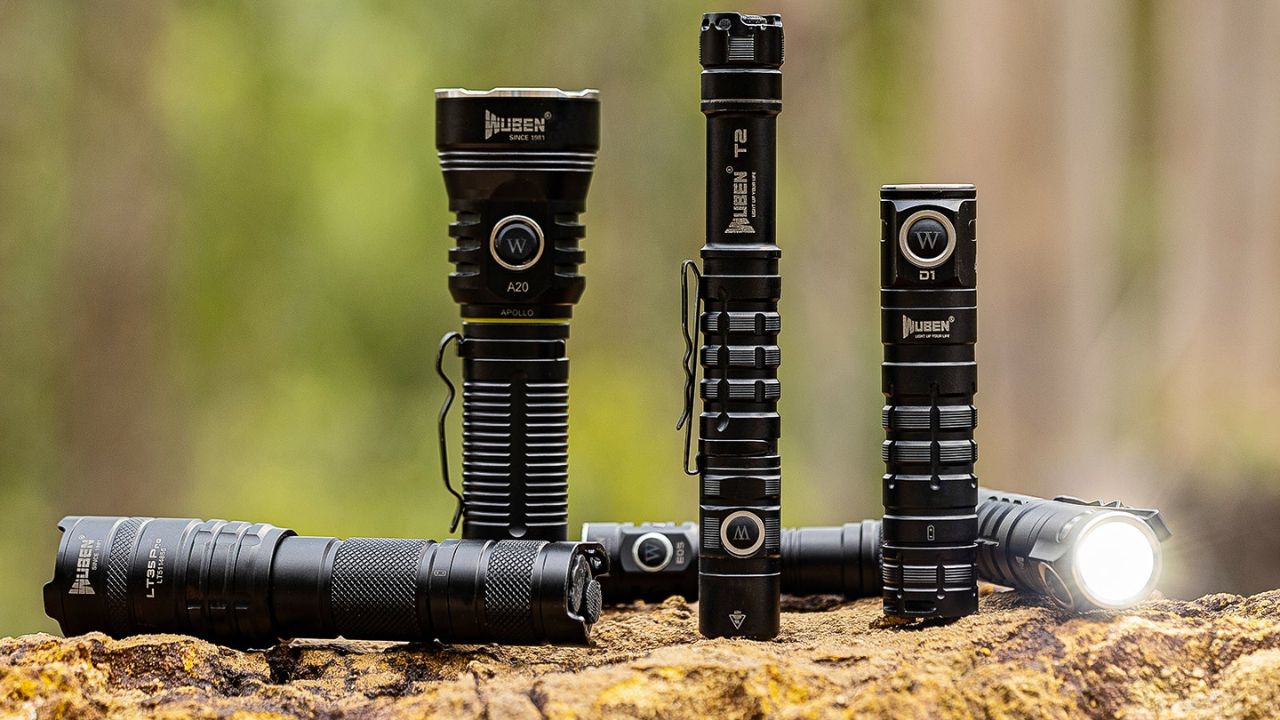Flashlights are mandatory devices that can be used in ordinary conditions as well as critical situations. Nevertheless, the availability of a wide range of prices extends from rather affordable models to significantly more expensive premium ones that complicate the choice of the best product.
Whether it be for an amateur hobbyist or a professional, this article will demystify the difference between a budget and premium Rechargeable Flashlight and guide you in determining what you are actually paying for.
What Differentiates Budget Flashlights From Premium Flashlights?
Material and Build Quality
One of the marking characteristics that would clearly depict the flashlight as a budget or premium product is the material and construction. Cost-effective flashlight products may contain plastic or thin aluminium in their construction. Altogether, these materials are unreasonably lightweight and, in most cases, quite effective when used on an everyday basis; nevertheless, they provide fewer strength features, and consequently, they quickly wear down.
While ordinary flashlights may be made from cheaper materials such as plastic, premium flashlights are normally made from high-end metals, including aircraft-grade aluminium or stainless steel. These materials offer superb strength, and these products are made in a way that they will not break easily or when exposed to falls, water, or even very high temperatures. Some of the premium features in buildings are superior build quality, meaning that it is likely to last longer and perform well, especially in rigorous conditions.
Light Output and Efficiency
Another important factor distinguishing budget from premium flashlights is the technology used in light output. Budget models typically employ basic LED technology or even traditional incandescent bulbs. Although they provide sufficient light for everyday tasks, their output and efficiency usually lag behind those of more advanced options.
Premium flashlights use LED bulbs, which are brighter, offer more lumens, and consume less power. These models usually have more brightness control options, strobe functions, and focus options, which make them more flexible and capable of controlling the amount of light emitted. This makes them well-suited for a wide range of applications, from tactical uses to outdoor adventures.
Battery Life and Power Options
When it comes to power, budget and premium flashlights diverge significantly. Budget models frequently rely on disposable batteries, which, while convenient, can result in recurring costs and environmental impact. Additionally, budget flashlights often have shorter battery life, making them less ideal for extended use.
Premium flashlights usually feature rechargeable batteries, presenting both economic and environmental advantages. Many high-end models also include various power options, such as solar charging capabilities and USB ports. These features make premium flashlights more versatile and sustainable, ideal for users who require dependable and long-lasting power sources.
Features and Technology
Another critical area where budget and premium flashlights diverge is in their features and technological advancements. Budget models are generally straightforward and lacking in extra features. While simplicity can be a benefit, it also limits functionality and versatility.
In contrast, premium flashlights often come equipped with a host of additional features. Some may come with shockproof and scratchproof views as well as built-in smart elements like Bluetooth for the convenience of controlling the item from a distance and additional light options. All these features complement the fundamental use of the flashlight and enable it to work well in different situations.
Performance and Reliability
It is a core aspect of lighting, particularly in places where lighting is of great importance in terms of performance and reliability. Economy models are satisfactory when it comes to illumination during such common applications, yet the dependability is not always high, especially if the flashlight is tested under stressful circumstances. This variability is often a result of less rigorous quality control and cheaper materials.
Conversely, premium flashlights are designed to deliver consistent performance across a wide range of conditions. They undergo stringent quality control measures, ensuring that each unit meets high standards of reliability and durability. This makes them trustworthy tools for professionals and enthusiasts who cannot afford equipment failure, whether it's during a search and rescue mission or a backcountry trek.
Cost vs. Investment
The price of a flashlight is quite evident, but in this respect, one needs to look at the big picture in terms of monetary worth. You will notice that affordable brands and models are always popular because they are relatively cheap to acquire. However, in the long run, the expenses are quite high because of the constant battery replacements and possible early degradation.
Premium flashlights, while more expensive initially, often provide better long-term value. Their durability, extended battery life, and range of features can justify the higher upfront investment. For those who need a dependable, high-performance flashlight, the initial cost can be outweighed by the benefits of reliability and functionality over time.
Conclusion: Choosing the Right Flashlight
Deciding between a budget and a premium flashlight depends largely on your individual needs and intended use. By making a comparison between the budget and the premium flashlights, the consumer is aware of what comes with each material and can, therefore, make the best decision. Therefore, the suitable flashlight will rely on the balance between the cost and the required features and their integration in accordance with the user’s needs, financial capabilities, and constraints.


